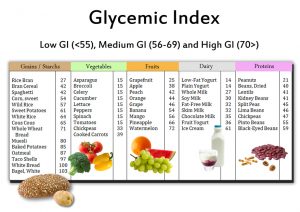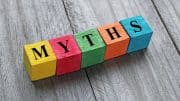Calories differ based on the source.
A calorie is a single measurement of energy, and each calorie is the same in terms of energy. If they come from a different source, are they different in the way they affect the human body based on the laws of physics and thermodynamics? Are all calories are created equal on paper, but the way the body breaks down alcohol, carbohydrates, protein, and fat is different. These are the four primary sources of calories in our diet, and the effect of each has a different effect on our bodies. The overall discussion is too big for a single blog article.
The Macronutrients and Calories:
- Fats: Fatty acids are dense in collies and flavorful sources of energy. Fats tend to slow digestion and are required to deliver essential fat-soluble vitamins. Human bodies need fats to transmit nerve signals and are a part of every cell membrane of both animals and plants. Humans can not survive without fatty acids and in fact, we cannot make the essentials ones, We must get essential fatty acids from out diets, All dietary fats provide about nine calories per gram. Some fats are better for us than others, For example, polyunsaturated omega-3 and monounsaturated fats are protective, anti-inflammatory properties, whereas artificial trans fats cause an increased inflammation and heart disease. These fats found in foods like wild salmon, nuts, olives, and flaxseed.
- Protein. Protein helps us feel fuller for longer by slowing digestion. Sure, protein has a primary role in the body to maintain and build new cells. Protein needs are greatest during childhood, adolescence and pregnancy as the bodies are growing. Protein is also beneficial for weight loss, as it contributes to satiety and reduces the amount of lean muscle your body burns for energy. Proteins, burned as energy, provide about four calories per gram. Protein can be burned for energy, but this process is less efficient and often results in loss of energy in the process.
- Carbohydrates. Carbohydrates are the most complex because our bodies use the types of carbohydrates or sugars in very different ways. Carbohydrates are primarily used as a source of energy. The brain, heart, liver, and muscles all require carbohydrates as their primary source of energy. All carbohydrates provide four calories per gram. The one exception to this rule is fiber which we cannot use for energy. Fiber is considered a high-quality carbohydrate since it slows digestion and can moderate the absorption of other nutrients. Fiber can slow the absorption of more refined sugars, protein, and fats.
- Alcohol. Many do not list this as a macronutrient, but it is one of the sources of energy. Alcohol with sugars is two of the macronutrients that are the easiest to avoid in weight loss. They provide little nutritional value.
Each macronutrient listed above goes through a different biochemical pathway. Some of the processes are inefficient and cause energy or calories are lost as heat[1]. Even more important is the fact that different macronutrients have an effect on the hormones and brain centers that control hunger and eating behavior (see my post on these hormones). Clearly, the foods we eat can have an impact on when and how much we eat, and we do not need to help our bodies become more hungry.
Here are three proven examples of why all calories are NOT JUST a calories:
- Fructose versus Glucose. These are not the only sugar in our diets, but they are two main simple sugars in the diet. These two are almost identical six carbon atoms and have the same chemical formula, but your bodies see them entirely differently. Most fructose in the American diet no longer comes from fruit but rather it is from high fructose corn syrup[2]. In fact, fructose cause a spike in Ghrelin or at least it does not increase ghrelin and increases hunger[3]. Glucose is metabolized by all of the body’s tissues, but fructose[4] is more limited and can only be metabolized by the liver in any significant amount. Unfortunately, fructose does not stimulate the satiety centers in the brain in the same way as glucose, leading to reduced satiety[5]aigh consumption of fructose can cause insulin resistance, abdominal fat gain, increased triglycerides, blood sugar, and small, dense LDL compared to the same number of calories from glucose[6],[7],[8].
- Lower Glycemic Index. Refined and processed carbohydrates are so easily and quickly absorbed. They are a common cause of worsening insulin resistance and obesity. These
refined simples sugars include sugars like sucrose, high fructose corn syrup, and refined grain products like white bleached flour that is used to bake white bread. These refined and simple carbohydrates tend to be low in fiber. The low fiber level or high glycemic index results in them digested and absorbed quickly. Higher fiber slows the absorption of sugar and other macronutrients[9]. The faster they are absorbed, the more rapid the sugar and insulin spike in the blood. Simple carbohydrates have been proven to cause increase under and cravings after a meal[10]. Although the study only included men, it should correlate to women.
- Protein Suppresses your Appetite and Take More Calories to Use For Energy. I am not a high protein supporter, but I am the right amount of protein person. What is the right amount? I would argue that the right amount is about 20-30 grams with each meal. The total should be 1-1.3 grams per kilogram body weight. For a 70 Kilogram person that is about 70-100 grams. How does protein work at suppressing hunger? I would suspect that it has to do with the slow digestive process with proteins, so you stay full longer but the key point is that protein decreases hunger without any effort on your part. Studies show that higher-protein diets protein keep you full longer than other macronutrients[11],[12],[13] and result in dieters eating fewer calories throughout the day[14]. Also, higher protein diets require much more energy to metabolize than fats and carbohydrates[15],[16],[17]. Simply put, protein makes a diet less like a diet.
- Avoid high fructose corn syrup. I recommend that you get your fructose from fresh fruit and avoid this processed sugar.
- Get enough protein. I recommend you get about 20-30 grams per meal. Probably not as large as the steak above. No one would avoid weight gain on that behemoth.
- Get enough fiber. I recommend 30-40 grams of fiber to keep you full.
- Abstain from Alcohol and other liquid calories. Get your calories from food. Eating them in liquid form is more empty, and chewing is part of the process of obtaining satiety.
- Limit all simple sugars. I usually tell my patient to limit all foods that are white outside of cauliflower.
-
Bray, GA. “How Bad Is Fructose?” The American Journal of Clinical Nutrition 86, no. 4 (October 1, 2007): 895–96. [PubMed]
-
Feinman, Richard D, and Eugene J Fine. “‘A Calorie Is a Calorie’ violates the Second Law of Thermodynamics.” Nutrition Journal. Springer Nature, July 28, 2004. doi: 10.1186/1475-2891-3-9
-
Halton, TL, and FB Hu. “The Effects of High Protein Diets on Thermogenesis, Satiety and Weight Loss: A Critical Review.” Journal of the American College of Nutrition 23, no. 5 (October 1, 2004): 373–85. [PubMed]
-
Johnston, CS, CS Day, and PD Swan. “Postprandial Thermogenesis Is Increased 100% on a High-Protein, Low-Fat Diet versus a High-Carbohydrate, Low-Fat Diet in Healthy, Young Women.” Journal of the American College of Nutrition 21, no. 1 (February 1, 2002): 55–61. [PubMed]
-
Jürgens, H, W Haass, TR Castañeda, A Schürmann, C Koebnick, F Dombrowski, B Otto, et al. “Consuming Fructose-Sweetened Beverages Increases Body Adiposity in Mice.” Obesity Research 13, no. 7 (July 1, 2005): 1146–56. [PubMed]
-
Leidy, HJ, HA Hoertel, SM Douglas, KA Higgins, and RS Shafer. “A High-Protein Breakfast Prevents Body Fat Gain, through Reductions in Daily Intake and Hunger, in ‘Breakfast Skipping’ adolescents.” Obesity (Silver Spring, Md.) 23, no. 9 (September 1, 2015): 1761–64. [PubMed]
-
Lennerz, BS, DC Alsop, LM Holsen, E Stern, R Rojas, CB Ebbeling, JM Goldstein, and DS Ludwig. “Effects of Dietary Glycemic Index on Brain Regions Related to Reward and Craving in Men.” The American Journal of Clinical Nutrition 98, no. 3 (September 1, 2013): 641–47. [PubMed]
-
Lustig, RH. “Fructose: Metabolic, Hedonic, and Societal Parallels with Ethanol.” Journal of the American Dietetic Association 110, no. 9 (September 1, 2010): 1307–21. [PubMed]
-
Paddon-Jones, D, E Westman, RD Mattes, RR Wolfe, A Astrup, and M Westerterp-Plantenga. “Protein, Weight Management, and Satiety.” The American Journal of Clinical Nutrition 87, no. 5 (May 1, 2008): 1558S–1561S. [PubMed]
-
Page, KA, O Chan, J Arora, R Belfort-Deaguiar, J Dzuira, B Roehmholdt, GW Cline, et al. “Effects of Fructose vs Glucose on Regional Cerebral Blood Flow in Brain Regions Involved with Appetite and Reward Pathways.” JAMA 309, no. 1 (January 2, 2013): 63–70. [PubMed]
-
Stanhope, KL, and PJ Havel. “Endocrine and Metabolic Effects of Consuming Beverages Sweetened with Fructose, Glucose, Sucrose, or High-Fructose Corn Syrup.” The American Journal of Clinical Nutrition 88, no. 6 (December 1, 2008): 1733S–1737S. [PubMed]
-
———. “Fructose Consumption: Considerations for Future Research on Its Effects on Adipose Distribution, Lipid Metabolism, and Insulin Sensitivity in Humans.” The Journal of Nutrition 139, no. 6 (June 1, 2009): 1236S–1241S. [PubMed]
-
Teff, KL, SS Elliott, M Tschöp, TJ Kieffer, D Rader, M Heiman, RR Townsend, NL Keim, D D’Alessio, and PJ Havel. “Dietary Fructose Reduces Circulating Insulin and Leptin, Attenuates Postprandial Suppression of Ghrelin, and Increases Triglycerides in Women.” The Journal of Clinical Endocrinology and Metabolism 89, no. 6 (June 1, 2004): 2963–72. [PubMed]
-
Veldhorst, MA, KR Westerterp, Vught van, and MS Westerterp-Plantenga. “Presence or Absence of Carbohydrates and the Proportion of Fat in a High-Protein Diet Affect Appetite Suppression but Not Energy Expenditure in Normal-Weight Human Subjects Fed in Energy Balance.” The British Journal of Nutrition 104, no. 9 (November 1, 2010): 1395–1405. [PubMed]
-
Weickert, MO, and AF Pfeiffer. “Metabolic Effects of Dietary Fiber Consumption and Prevention of Diabetes.” The Journal of Nutrition 138, no. 3 (March 1, 2008): 439–42. [PubMed]
-
Weigle, DS, PA Breen, CC Matthys, HS Callahan, KE Meeuws, VR Burden, and JQ Purnell. “A High-Protein Diet Induces Sustained Reductions in Appetite, Ad Libitum Caloric Intake, and Body Weight despite Compensatory Changes in Diurnal Plasma Leptin and Ghrelin Concentrations.” The American Journal of Clinical Nutrition 82, no. 1 (July 1, 2005): 41–48. [PubMed]
There are many examples of why calories are not just calories and that calories from one macronutrient do not necessarily react the same way as other macronutrients.
Recommendations on macronutrients:
The bottom line: Now all calories are equal. The source and other nutrients included in the food are important. Choose wisely.











Be the first to comment on "Editorial: Is a Calorie Just a Calorie?"